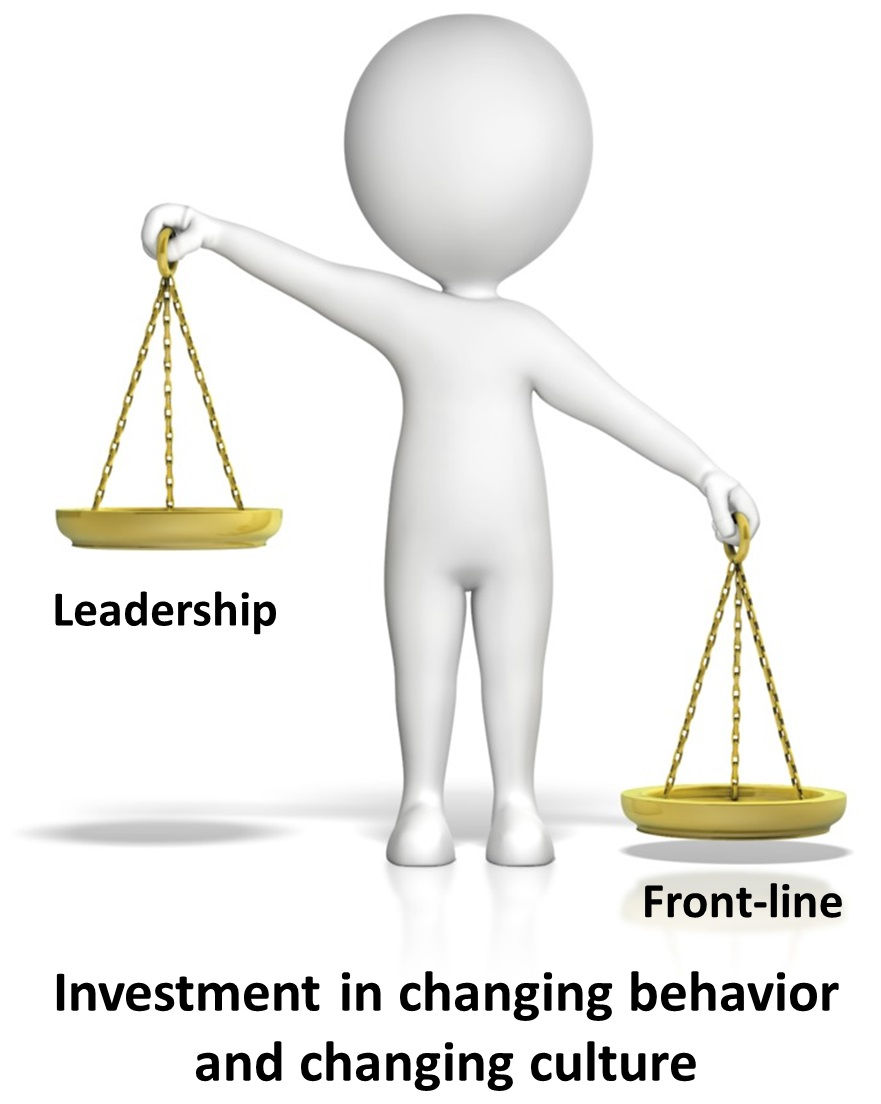Leadership Matters: Building and Sustaining a Culture of Continuous Improvement
- Rod Morgan, LSSMBB, Head of Faculty, RPM-Academy
- Mar 9, 2024
- 4 min read
Updated: Mar 11, 2024
I had the pleasure of attending the CME LEANCON conference in Halifax, Nova Scotia (Canada) last month that featured workshops and presentations on Lean operational excellence (of course), Artificial Intelligence, and Cybersecurity.
RPM-Academy was a proud sponsor for the event which also featured the launch of CME Nova Scotia's Institute for Operational Excellence (IOE, https://instituteopex.ca/) and their companion learning portal (https://cme-rpmacademy.talentlms.com/). The conference organizers, including CME Halifax's Vice President, Michel Raymond, and Workforce Development Manager, Alex Mihara, did a great job in putting together a fabulous event.
Another frequently discussed topic was that of the importance of creating the "right" organization culture along with the collective, group, and individual behaviors that are essential for building and sustaining a continuous improvement culture.
Key Behavioral Index?... Bah, Humbug!

There was even mention of the introduction of "key behavioral indicators" (KBIs) as a natural complement to "key performance indicators" (KPIs). I had trouble wrapping my head around that and, to be honest, the word "fluff" came to mind. Many organizations, and more so in services and the public sector, struggle to identify and "measure what matters" when it comes to quantitative key performance indicators and key results indicators. The cynic in me wonders how these same organizations would fair with the introduction of yet another category of "metrics" that I feel would be firmly entrenched on the qualitative side of the measurement fence? And even if KBIs could be successfully implemented, would it change a thing?
It's All About Da' Base... Leadership Matters!
In the ever-evolving landscape of organizational management, one principle that stands out for me as being indispensable is that of effective leadership! I posit that it is leadership that ultimately defines and shapes culture and, in my experience, there has been and continues to be a disproportionate focus on changing the behavior of frontline staff with little more than the equivalent of lip-service being given to changing the culture and associated behavior of the leadership team.
We are told, repeatedly, that in the pursuit of excellence, particularly within the realm of Lean methodologies, success hinges not only on the adoption of tools and techniques but on the fundamental transformation of organizational behavior and culture. At the heart of any successful Lean deployment lies a profound understanding: To change the organization, one must first change its leadership.

This foundational belief underscores a shift in focus from mere process optimization to the cultivation of a holistic culture of continuous improvement. Drawing parallels with the familial structure, where parental behavior is a major factor in molding the character of children, the workplace environment, too, is profoundly influenced by the actions and ethos of its leaders.
In the pursuit of organizational transformation, the significance of aligning leadership behavior with the values of Lean cannot be overstated. It is the leaders who set the tone, establish the expectations, and model the behaviors that ultimately permeate throughout the organization.
Culture Eats Strategy for Breakfast
The Associated Press news service published an article in 2006 about Ford America and then-President, Mark Fields, making mention of one of his favorite slogans (on the walls of the office): “Culture eats strategy for breakfast.” *
*Note: While this famous phrase is often attributed to management consultant Peter Drucker, there is no direct evidence or citation to confirm its true origin.
There are many ways to interpret that well-used and adapted slogan and one takeaway might be that "no amount of procedural refinement can compensate for a culture that does not embrace the principles of Lean".
To embark on this journey of cultural metamorphosis, organizations must make a deliberate investment in nurturing the right leadership behaviors, from the executive suite to middle management and down. This investment entails not only providing training and resources but fostering a mindset shift that prioritizes continuous learning, empowerment, and accountability. Leaders must embody the principles (of Lean) that they seek to instill, serving as stewards of change and champions of improvement.

However, the ripple effect of leadership extends far beyond the confines of boardrooms and executive/management offices. As frontline staff observe and internalize the behaviors exhibited by their managers and supervisors, they too are inspired to emulate and embody the values of continuous improvement. This cascading effect, akin to a waterfall, engenders a culture where every individual is empowered to contribute to the organization's success.
Yet, the journey towards a Lean culture is not without its challenges. Resistance to change, entrenched habits, and organizational inertia can pose formidable obstacles. Former President of the United States John F. Kennedy once remarked, "Leadership and learning are indispensable to each other." By prioritizing and fostering a culture of leadership development and continuous improvement, and the leadership behavior demanded by Lean, organizations can navigate these challenges with resilience and determination.
In Conclusion
The path to organizational excellence lies in recognizing the pivotal role of leadership in shaping culture. By investing in leadership development and aligning behaviors with Lean principles as the first step in striving to change culture and behavior, organizations can create and foster an environment that not only promotes but inspires continuous improvement that can and will permeate every facet of their operations. Attributed to Mahatma Gandhi, the phrase, "Be the change you wish to see in the world", can be borrowed for the purpose of emphasizing that it is only through exemplary leadership that change not only becomes possible but inevitable.
Call to Action
Whether you are a leader, manager, supervisor, or simply have a passion and thirst for learning, sign up today for a FREE account at RPM-Academy Online and access FREE courses selected from our vast library of online courses and certificates spanning a wide range of personal and professional development topics including Lean, Six Sigma, Agile, Leadership skills, soft skills, technology, and much, much more! Sign up and explore the library now.







Comments